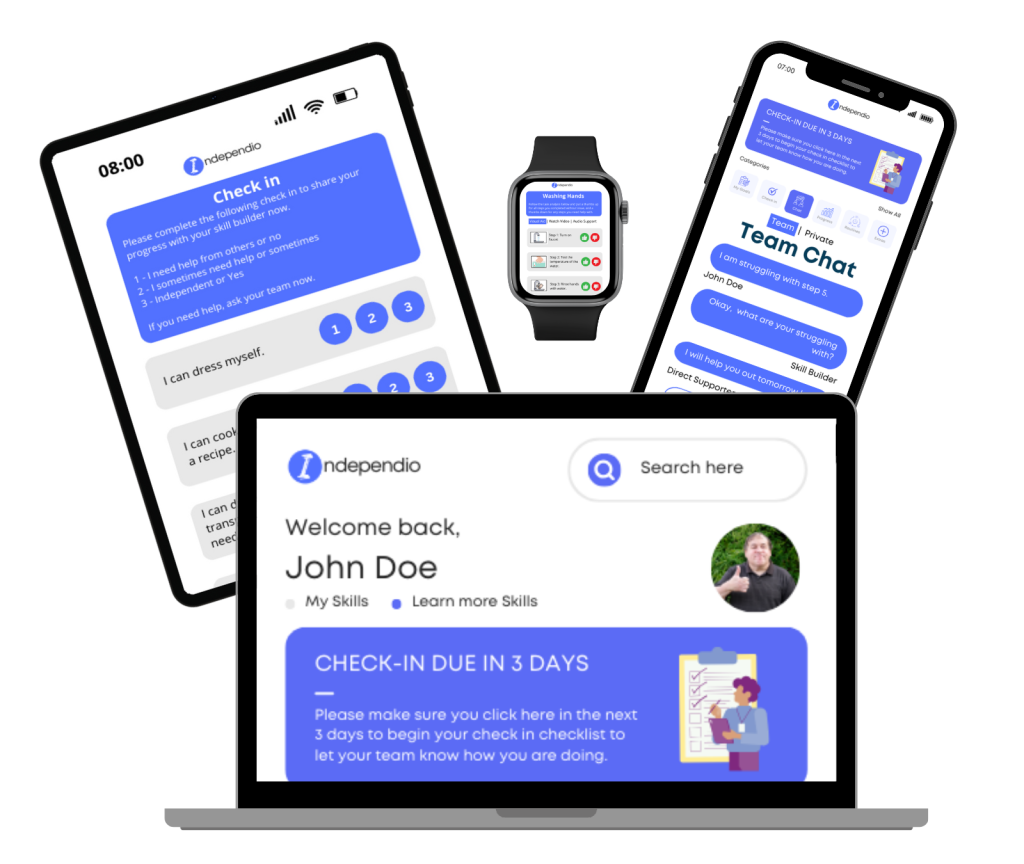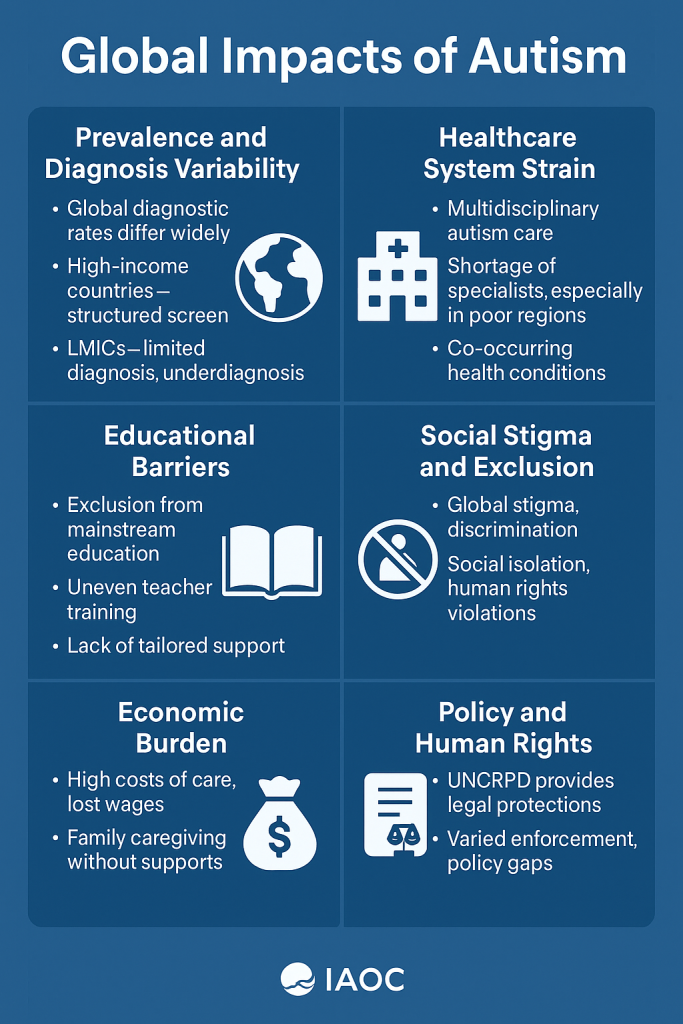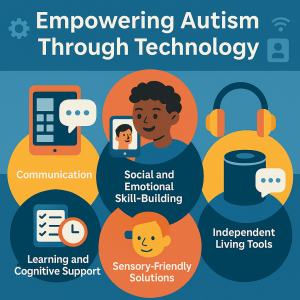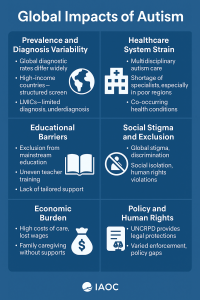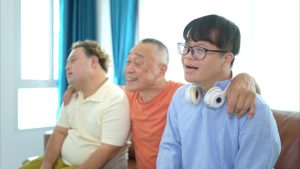As Autism awareness month comes to a close, autism is once again front and center in national headlines. This time, however, the conversation is more complex than ever before. From rising prevalence rates to controversial policy decisions and powerful responses from the autism community, here’s what you need to know about how autism is being discussed right now—and what it means for the future.
The Centers for Disease Control and Prevention (CDC) reports that autism spectrum disorder (ASD) now affects 1 in 31 children in the U.S., up from 1 in 36 in 2020 as AutismSpeaks has recently shared. This increase is largely attributed to improved screening practices and broader diagnostic criteria, particularly benefiting historically underserved communities(1, 2, 3).
Federal Policy Changes and Funding Cuts
Despite public commitments to prioritize autism research, the Trump administration has enacted substantial funding reductions across several federal agencies:
- Department of Education: The Institute of Education Sciences has been significantly downsized, halting grants aimed at training special education professionals.
- National Science Foundation: Funding for inclusive autism programs has been revoked, with officials citing politically controversial language.
- Department of Defense: A previously consistent $15 million annual allocation for autism research has been eliminated.
- National Institutes of Health (NIH): Grants have been canceled or delayed due to executive orders targeting diversity, equity, and inclusion initiatives, impacting research involving trans and gender-diverse autistic individuals .
These developments, reported by Time Magazine, have left scientists, educators, and families deeply concerned about the future of autism services and innovation in the U.S.
Controversial Statements by HHS Secretary Robert F. Kennedy Jr.
Health and Human Services (HHS) Secretary Robert F. Kennedy Jr. has made several contentious remarks regarding autism, including (5):
- He referred to autism as an “epidemic” caused by an “environmental toxin,” challenging the CDC’s findings that attribute rising diagnoses to improved awareness and detection (6, 8, 9).
- Kennedy claimed that individuals with autism “will never pay taxes, hold a job, go on a date,” statements that have been widely condemned as stigmatizing and inaccurate (7).
- He announced a new initiative to identify the environmental causes of autism by September, appointing David Geier, known for promoting the discredited vaccine-autism link, to lead the effort (2, 7).
These positions have drawn criticism from experts and advocates who emphasize the importance of evidence-based approaches and the dangers of perpetuating debunked theories.
Powerful Advocacy and Lived Experience Push Back
In response to these stigmatizing claims, self-advocates and allies are using their platforms to set the record straight. One notable voice is Andi Putt, an autistic mother and speech-language pathologist, who penned a heartfelt op-ed sharing how autism has shaped—but not limited—her life or her son’s.
Meanwhile, Tarik El-Abour, the first known autistic professional baseball player, continues to challenge assumptions about what autistic people can achieve. His story is a living refutation of Kennedy’s claims (The Guardian).
These voices underscore the importance of shifting public discourse toward acceptance and inclusion.
Advances in Autism Research
Recent studies have focused on improving diagnostic tools and understanding the neurological aspects of autism:
- A novel spatial-temporal-omics learning framework has been developed to enhance ASD classification using 4D fMRI data, offering a more efficient and accurate diagnostic approach (10).
- Researchers have introduced a self-supervised graph transformer model that leverages contrastive learning for brain connectivity analysis, aiming to improve autism detection (11).
These advancements hold promise for earlier and more precise diagnoses, leading to better-targeted interventions.
Addressing Gender Disparities in Diagnosis
Autism often presents differently in girls, leading to under-diagnosis in female autism.
VeryWellHealth shared that girls are more likely to engage in “masking” behaviors, adopting socially acceptable actions to hide their difficulties, which can obscure symptoms. Additionally, nearly 80% of females remain undiagnosed by age 18, highlighting the need for increased awareness and tailored diagnostic criteria for females (12).
Recognizing these differences is crucial for ensuring that all individuals receive appropriate support and resources.
Worldwide Observances and Advocacy
World Autism Awareness Day, observed annually on April 2, continues to promote understanding and inclusion. In 2025, the theme focused on “Advancing Neurodiversity and the UN Sustainable Development Goals,” emphasizing the global commitment to embracing neurodiversity (13).
Global Information About Autism
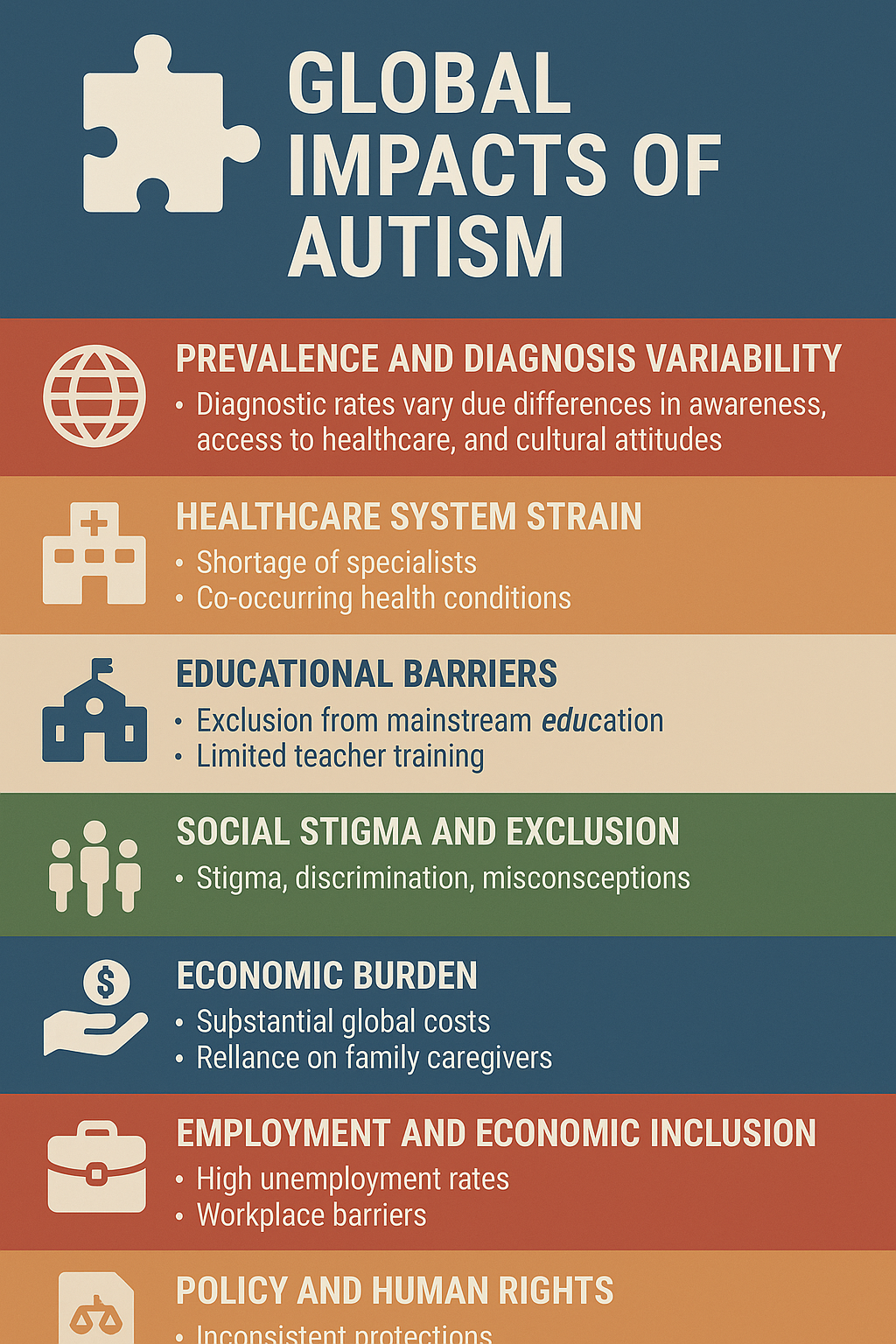
Global Autism Prevalence
Autism Spectrum Disorder (ASD) affects hundreds of thousands of people worldwide, but diagnostic rates vary dramatically due to differences in awareness, access to healthcare, and cultural attitudes. In high-income countries, autism is often diagnosed early thanks to structured screening systems (e.g., U.S., Canada, UK, Australia). In low- and middle-income countries (LMICs), autism remains under-diagnosed or misdiagnosed due to lack of trained professionals, stigma, or insufficient healthcare infrastructure (WHO).
Healthcare System Strain
Autism care requires multidisciplinary intervention—including pediatricians, neurologists, psychologists, speech and occupational therapists. Many nations report a shortage of such specialists, especially in rural and low-income regions. Individuals with autism often have co-occurring health conditions (e.g., epilepsy, ADHD, anxiety, GI issues), increasing demands on health systems (Lancet Commission, 2022).
Educational Barriers
Across the globe, autistic children face exclusion from mainstream education or lack of tailored supports. Inclusive education remains uneven globally:
- Some countries have laws mandating inclusion (e.g., IDEA in the U.S.).
- Others lack policies or funding to integrate neurodiverse students.
Another issue effecting global education is Teacher training in neurodevelopmental differences. Such trainings are limited in many systems, reducing effectiveness of support for autistic individuals.
Social Stigma and Exclusion
Stigma, discrimination, and misconceptions about autism are global issues. In many cultures, autism is still misunderstood, attributed to poor parenting, spiritual causes, or shameful behavior. Stigma leads to:
- Social isolation of families.
- Limited marriage and employment opportunities.
- Human rights violations such as forced institutionalization or denied education.
Economic Burden
Autism imposes substantial economic costs globally—both direct (therapy, care, medication) and indirect (lost wages, reduced productivity). A 2014 study estimated the global cost of autism at over $1 trillion per year, projected to increase without better supports (17). Countries with underdeveloped disability services rely heavily on family caregivers, increasing stress and reducing workforce participation (15).
Key findings from some recent studies highlighting the economic impacts of Autism include:
- Lifetime Costs:
- For individuals with ASD and intellectual disability, the estimated lifetime cost is $2.4 million in the United States and £1.5 million (approximately $2.2 million) in the United Kingdom.
- For individuals with ASD without intellectual disability, the estimated lifetime cost is $1.4 million in the United States and £0.92 million (approximately $1.4 million) in the United Kingdom. (16, 17)
- Annual National Costs:
- In the United States, the annual cost of supporting children with ASD is estimated at $61 billion, while the cost for adults is $175 billion.
- In the United Kingdom, the annual cost is £3.1 billion for children and £29 billion for adults (18).
Employment and Economic Inclusion
Globally, autistic adults face extremely high unemployment rates, even among those with higher education. Barriers include:
- Lack of workplace accommodations.
- Inaccessible hiring processes.
- Persistent bias about competence or communication style.
Emerging models, like supported employment and neurodiversity hiring initiatives (e.g., SAP, Microsoft), show promise but are not yet widespread. Digital assistive technology tools, like Independio, are badly needed for employment services and skill building (19).
- High Unemployment Rates: Globally, autistic adults experience significantly higher unemployment rates compared to other disability groups. For instance, in the UK, only 21.7% of autistic individuals are employed, the lowest among all disabled groups (19, 20).
- Barriers in Hiring Processes: Traditional job interviews often disadvantage autistic candidates due to challenges in social communication and the pressure of unstructured interactions (21).
- Workplace Bias and Misconceptions: Persistent stereotypes and a lack of understanding about autism can lead to biases in hiring and promotion decisions, further limiting employment opportunities for autistic individuals.
Neurodiversity Hiring Initiatives
- Microsoft’s Neurodiversity Hiring Program: Established in 2015, this program offers an alternative interview process tailored to neurodivergent candidates, focusing on their strengths and providing support through job coaches and structured onboarding. Microsoft Careers
- SAP’s Autism at Work Program: SAP has implemented a program to hire and support autistic employees, recognizing the unique skills they bring to roles in areas like software testing and data analysis. Wikipedia
- Specialisterne: This Danish company specializes in employing autistic individuals in IT and other sectors, leveraging their attention to detail and pattern recognition skills. Wikipedia
Policy and Human Rights
The United Nations Convention on the Rights of Persons with Disabilities (UNCRPD) provides a legal framework for protecting the rights of autistic people globally. However, implementation varies significantly:
- Some countries have strong protections.
- Others have minimal enforcement or ignore neurodevelopmental disability entirely.
Key policy gaps exist in access to healthcare, education, independent living, and community inclusion.
Global Advocacy and Neurodiversity Movement
The neurodiversity paradigm—which views autism as a natural variation of human wiring—has gained traction globally. Autistic self-advocates are increasingly leading organizations, research, and policy discussions. Global observances like World Autism Awareness Day (April 2) promote visibility, but critics argue we need to move beyond awareness toward acceptance, action, and inclusion.
Global Summary
| Impact Area | Global Effect |
|---|---|
| Health | Unequal diagnosis, overburdened systems |
| Education | Gaps in inclusion, lack of trained staff |
| Economy | Trillion-dollar costs, limited employment |
| Social | High stigma, reduced quality of life |
| Policy | Inconsistent protections, enforcement gaps |
| Advocacy | Rising but uneven global momentum |
Final Remarks
The narrative around autism is shifting—but not without friction. While outdated myths and stigmas still linger in high places, a powerful wave of advocacy, innovation, and lived experience is pushing back. On a global level, autism is not handled equitably. Issues surrounding health, education, economic impacts, social barriers, policies and advocacy are underscored by gaps in inclusion, lack of training, stigma, and more. As research evolves and more voices are heard, the hope is that we move toward a world that sees autism not as a deficit to fix, but a part of human diversity to support and celebrate.
References
- Autism prevalence rises to 1 in 31 children in the U.S. – AutismSpeaks
- RFK Jr. contradicts CDC on causes of autism – Axios
- People with autism and their families: share your views on Robert F Kennedy Jr’s comments – The Guardian
- Trump Administration Cuts Funding for Autism Research—Even As It Aims to Find the Cause – Time
- My Son and I Are Autistic. Here’s Why RFK Jr. Is Wrong About Us (Exclusive) – People
- People with autism and their families: share your views on Robert F Kennedy Jr’s comments – The Guardian
- RFK Jr. Says People with Autism ‘Will Never Pay Taxes, Hold a Job, Go on a Date,’ Sparking Fierce Backlash – People
- RFK seeks the ‘environmental’ cause of autism. Scientists say it’s not that simple – NPR
- RFK Disputes Results of CDC Autism Prevalence Study Citing “Common Sense” but No Actual Science – Autism Science Foundation
- Efficient 4D fMRI ASD Classification using Spatial-Temporal-Omics-based Learning Framework – Weng, Cai, & Zhou – arxiv
- Self-supervised Graph Transformer with Contrastive Learning for Brain Connectivity Analysis towards Improving Autism Detection – Leng, Anwar, Rekik, He, & Lee – arxiv
- 10 Signs and Symptoms of Autism in Girls – VeryWellHealth
- World Autism Awareness Day – WikiPedia
- The Lancet Commission on the future of care and clinical research in autism – The Lancet
- The Cost of Autism Spectrum Disorder – PMC
- Costs of Autism Spectrum Disorders in the United Kingdom and the United States – Portal de Periódicos da CAPES
- Current Best Evidence: Translating Best Evidence into Best Care – The Journal of Pediatrics
- Economic cost of autism disorders is considerable – MDEdge
- Autistic people still face highest rates of unemployment of all disabled groups – Autistica
- Access to employment: A comparison of autistic, neurodivergent and neurotypical adults’ experiences of hiring processes in the United Kingdom – Davies et al. – PMC
- Barriers to Employment: Raters’ Perceptions of Male Autistic and Non-Autistic Candidates During a Simulated Job Interview and the Impact of Diagnostic Disclosure – Flowers et. al. – PMC
- Convention on the Rights of Persons with Disabilities and Optional Protocol – United Nations


